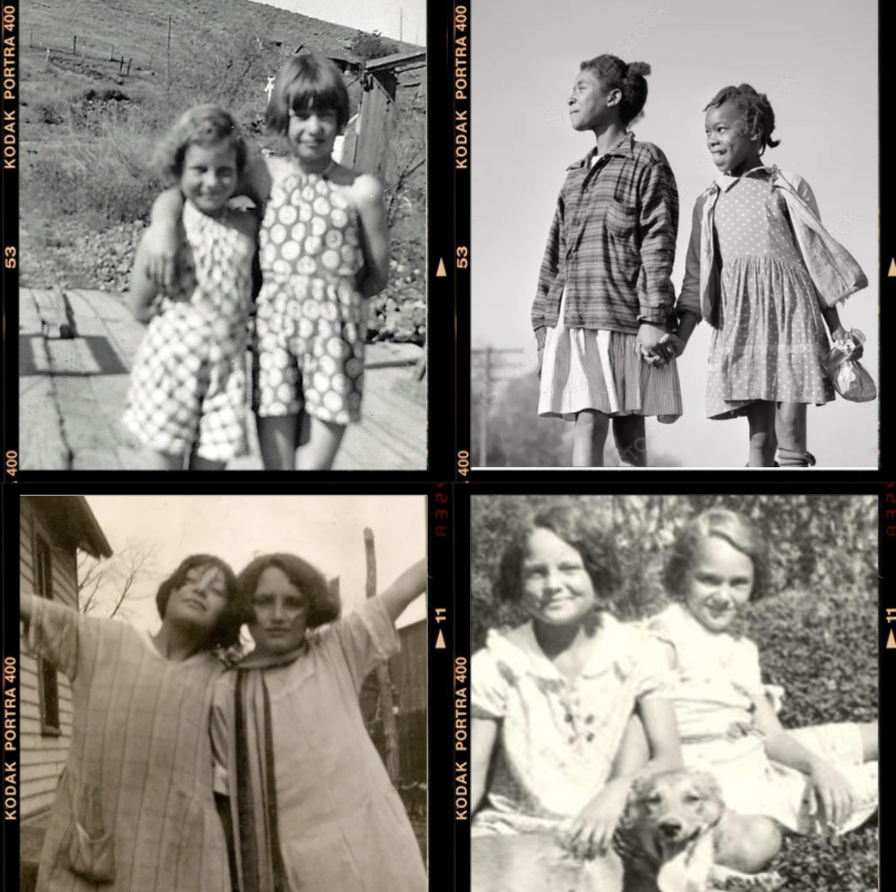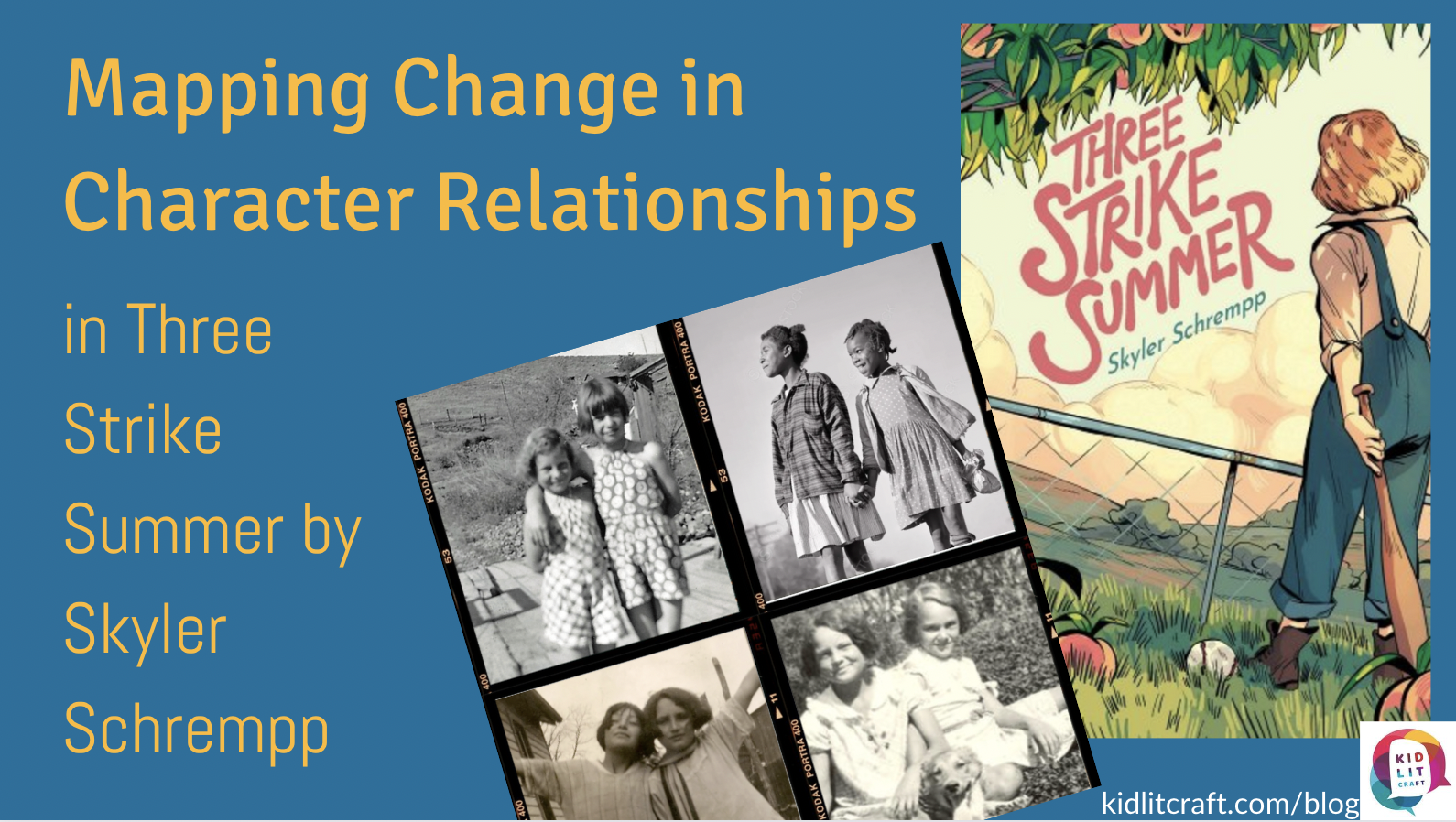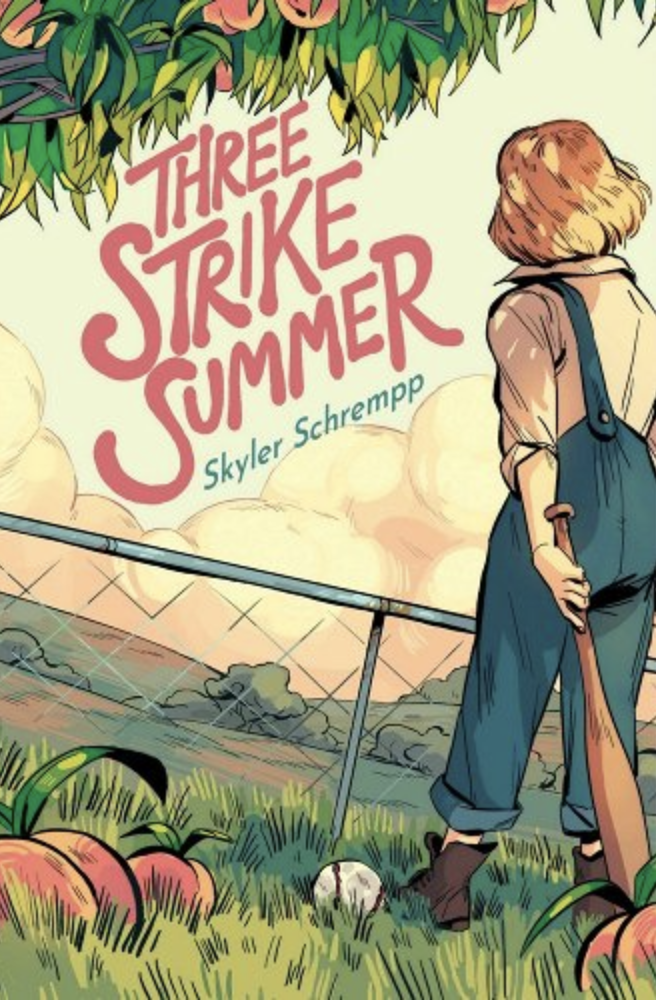craft review by Erin Nuttall
It can be argued that Skyler Schrempp’s debut novel, Three Strike Summer, is about baseball. Or poverty. Or migrants. Or summer. Or families trying their best to get by. Or unions. Or friendship. Or finding joy even in the hardships of life. And it is. It’s about all of these things, but my favorite part of the story is the story of sisters. Of Gloria and Jessamyn. Schrempp gives voice to a frustrating, loving, complicated relationship that grows, changes, and strengthens throughout the story.
Action and Visual Image that Shows Character Relationship
The book opens with the main character, Gloria, bent over a washbasin while Jess scrubs the dust and dirt out of Gloria’s hair. It’s a fantastic opening because in a few short sentences it tells the reader so much about the family’s situation and especially the dynamics between the sisters. Gloria tells the reader: “She [Jessamyn] was doing this on purpose. Washing my hair. Keeping my head down. Pinning me here in the kitchen over a doggone washbasin. She was doing it so I wouldn’t see what was going on.” (4) We see that Jess is in charge and Gloria doesn’t like it.
Throughout the scene, while she scrubs Jess keeps telling Gloria what to do, and what not to do. She snaps a towel–and her words–at Gloria. Gloria gives it right back. She pushes, wriggles, and fights every step of the way, sassing her sister, sloshing the water on her, and teasing her about a boy. Schrempp sets up an uneven dynamic between the girls that isn’t working for either sister but seems to be inevitable. It’s also an incredibly familiar dynamic between siblings jostling for their roles in the family and with each other. These are the sisters who will be riding in the back of a truck together for a thousand miles as the family makes its way from Oklahoma to California.
Establishing a Common Goal
In the evenings when they camp for the night Gloria takes every opportunity she can to practice baseball, especially pitching. She’s obsessed with baseball and determined to join a team when the family gets to California. And Jess helps her. In one delightful scene, Jess is grumpy about playing ball with her sister, using a dead branch for a bat, and having to pick up the ball from the dust, and does so half-heartedly. While the girls play they also talk, goading each other about boys and baseball. Gloria pushes Jess’ buttons enough that Jess gets serious about playing and ends up smacking the ball so hard the branch shatters. Astonished, Jess tells Gloria to go find a better branch so they can keep playing.
Using a Visual Image to Establish Relationship Change
As the sun sets the girls head back to camp.
We walked shoulder to shoulder, or I guess, my head to her shoulder since she’d shot up like a new sapling and I didn’t show any sign of catching up. I couldn’t remember the last time my sister wasn’t walking five steps ahead of me or shrinking back telling me to go on! (55)
This is a picturesque symmetry of the girls walking side by side for once. It shows the broadening and equalizing of their relationship, even as Gloria’s still catching up. Maybe it’s this new sense of equity that allows Gloria to offer a kindness disguised as an insight to her sister. Talking about Jess’ crush, Joe Franklin, Gloria says, “And sure, he does look at all the girls. But he looks at you different. And I know ‘cause I seen him looking at you when you weren’t looking at him…” (55) This bit of generosity from Gloria softens the relationship between the sisters. While they still argue and button push there’s more magnanimity in their interactions.
Character Takes Action that Shows Relationship Change

Later, when the family is living and working at a peach orchard in California, Gloria has bought her way onto a baseball team through bravado and grit, and especially through information on how the kids can get out of the fenced and guarded orchard to play ball in a neighboring field. The thing of it is, they will have to dig under the fence to do it. When Jess finds out about it, instead of turning Gloria into their parents she surprises Gloria and offers to help.
The next day it was Jess who began the digging, and Jess who knew that water could do more to loosen up the soil than a spade could. It was Jess who bent down and carefully wedged the spade between the wires of the fence to loosen them a little more and Jess who carried dirt in her pockets and sifted it through her fingers like she was checking for wind and rain. (178)
With Jess’ hard work and knowledge, there’s soon a hole big enough for the rag-tag baseball team to sneak out to play baseball. This is another step in strengthening the sister’s relationship.
Returning to the Opening Image of the Relationship
At the end of the story, Schrempp mirrors the opening scene. Again the sisters are together this time in the back of the truck as the family looks for new opportunities. Jess is not standing over Gloria, instead, they stand side by side. Instead of Jess bossing Gloria, Gloria gently ribs her sister with a “wink [her] voice” Gloria asks Jess what she writes in her letters to Joe Franklin.
She kept scribbling. “I tell him where we are and where we’re going…and whatever I don’t wanna say out loud.”
I stood there letting her have her write until she blinked up at me. “Don’t worry Glo, you get most of the good bits.” (292-3)
In Schrempp’s talented hands the reader watches as Gloria and Jessamyn work together, face hardships together, and become allies instead of adversaries. Schrempp never comes out and says that it’s this difficult journey as migrants–and all that entails–that enables the sisters to become real friends, but the way the story unfolds the reader can’t help but wonder if that beautiful gift of true sisterhood could only have sprung from the well of tribulation.
Now it’s YOUR turn!
- Look at your work in progress for a close relationship–sisters, siblings, best friends, cousins. How does the relationship change over the course of the story? Identify where they are allies, antagonists, distant, close.
- Try some freewriting exercises (these may or may not end up in your novel, but they can give you more insight into character). Write a scene for each of the following prompts. Do each exercise twice with your two characters, switching who does the action.
- one character gives the other character a gift
- the character loses that gift
- one character does a kindness for the other character
- one character does or says the most hurtful thing they could to the other character
- one character does something to protect the other character.
- Look for opportunities to mirror scenes near the beginning and end of the novel to show how the relationship has changed, through visual image and through action.
Read our interview with Skyler Schrempp:
Check out more about how to establish characters in historical fiction:
Erin Nuttall holds an MFA in Writing for Children and Young Adults from Vermont College of Fine Arts and is an active member of SCBWI and ALAN. She lives outside of Chicago with her family where she writes stories for middle grade and young adult readers that offer a humorous take on friendship, identity, feminism, and romance.



COMMENTs:
0